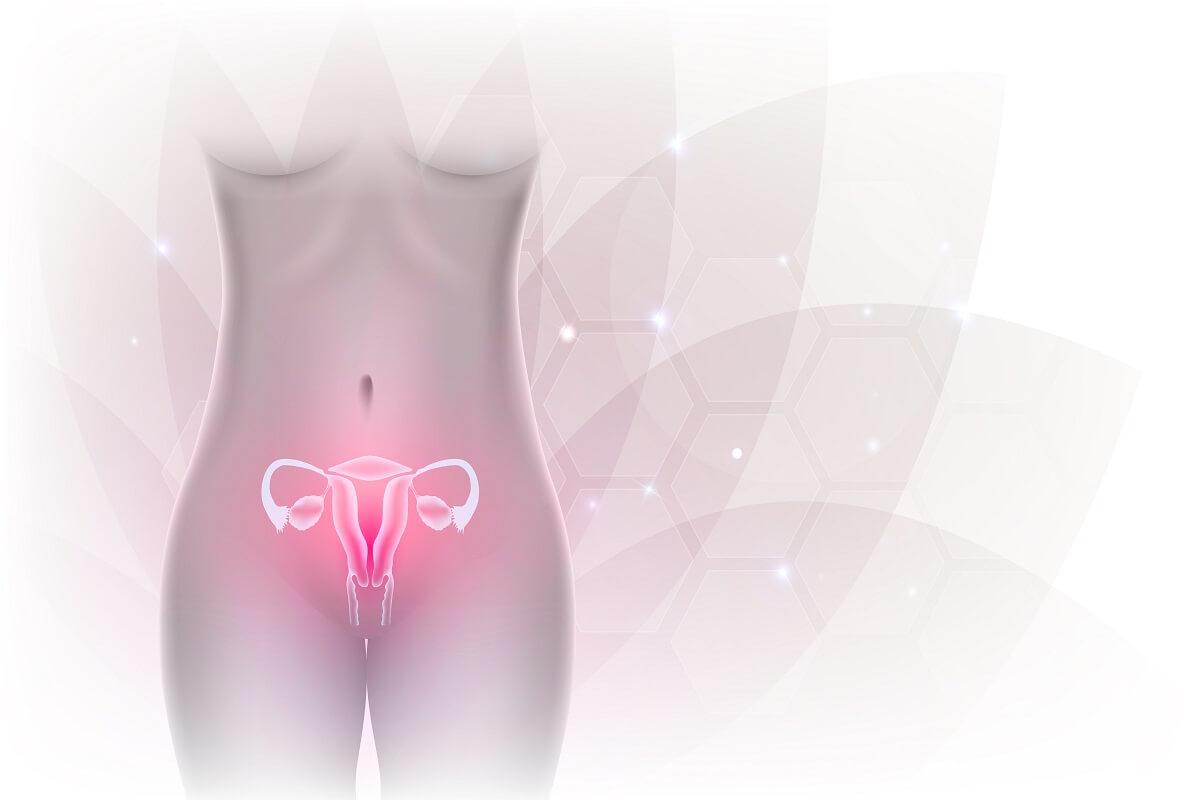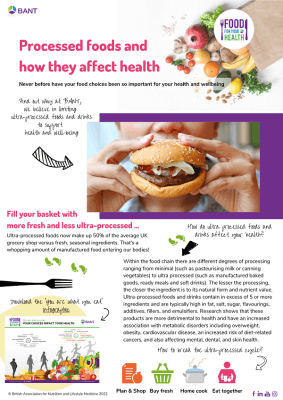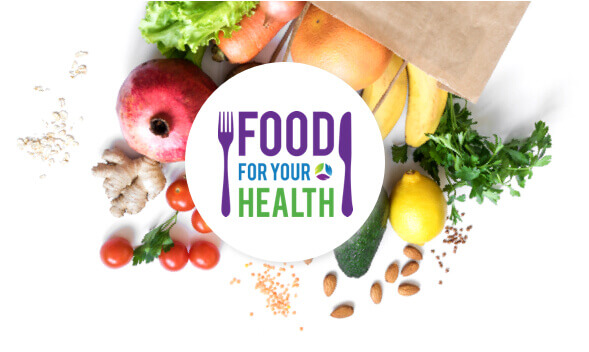
27 Feb 2023 Nurturing your vaginal flora as an integral part of female health
So much of female health is in the hands of your microbiota.
The vaginal microbiome is a diverse community of microorganisms that live in the vagina. This unique ecosystem is a critical determinate of female health; mediating female reproductive health, protecting against infection, and facilitating the transfer and acquisition of microbiota to infants born vaginally. Multiple factors can influence the microbial composition of the vaginal microbiome, notably diet. The foods you eat can promote the growth of beneficial commensal bacterial or conversely trigger an overgrowth of more pathogenic species. Adopting a healthy balanced diet is therefore beneficial to supporting the vaginal microbiome, and female health in general. Read on to discover more about this unique microbiome.
Figure that the microbiome is something you only find in your gut, think again.
That’s right. Your gut microbiome is not the only microbiome in your body as we also have an oral microbiome (in the mouth), and women* have an all-important vaginal microbiome. When we think of the vagina, it is often to do with sexual pleasure, periods, pregnancy, or an infection we’re too embarrassed to discuss. There is a lot of nutritional focus given to the gut microbiome and we know that beneficial gut microbiota work in synergy with our human biology to promote health. The vaginal microbiome is perhaps lesser discussed but is equally important.
We are conditioned to think of the vagina as an organ that needs cleaning to create a sterile environment free from bacteria and disease. However, what women should really be doing is nurturing this ecosystem that thrives with billions of microbes which, when in balance, are hugely beneficial to our reproductive and overall health. These microorganisms make up the vaginal microbiome.
Long live lactobacilli
 The composition of the vaginal microbiome depends on a range of factors including age, hormonal changes, race, sexual activity, immunity, hygiene practices, smoking, contraceptive use, antibiotics, diet and stress (1). The microbiome is a dynamic force, constantly changing throughout a woman’s life and menstrual cycle.
The composition of the vaginal microbiome depends on a range of factors including age, hormonal changes, race, sexual activity, immunity, hygiene practices, smoking, contraceptive use, antibiotics, diet and stress (1). The microbiome is a dynamic force, constantly changing throughout a woman’s life and menstrual cycle.
A healthy vaginal microbiome is heavily populated by different strains of lactobacilli which produce lactic acid and hydrogen peroxide that help maintain the vagina’s acidic pH (below 4.5). Lactobacilli also produce anti-microbial and anti-inflammatory compounds. The most common strains are L. iners, L. crispatus, L. gasseri and L. jenesenii (2). Think of them as tiny bodyguards who keep a close eye on troublemakers and turn the riff-raff away.
Unlike the gastrointestinal tract which improves with a greater variety of microbes, a diversity of microorganisms in the vaginal flora can be linked to an overgrowth of problematic bacteria which causes imbalances and dysbiosis, triggering conditions such as bacterial vaginosis, urinary tract infections and candida fungal infections commonly known as thrush.
However, just like the gut microbiome the composition of vaginal microbiota can be influenced by the choice of foods regularly consumed in the diet. In this case, foods which support lactobacilli and vaginal pH balance.
Microbiome disrupters
We have already established that fluctuations in vaginal flora are related to a host of both internal biological factors and external lifestyle habits. Let’s explore some of these in more detail.
In women of reproductive age, physiological changes, such as monthly changes in hormone levels during menstruation, cause fluctuations in the vaginal microbiome as well as temporary changes during pregnancy.
Bacterial vaginosis is linked to a rise in vaginal pH, a reduction of lactobacilli and hydrogen peroxide, and bacterial overgrowth related to vaginosis. Bacterial vaginosis can cause further health complications, increasing the risk of fertility issues, pelvic inflammatory disease, pre-term births and contracting sexually-transmitted diseases (3,4,5).
The antibiotics metronizadole or clindamycin are regularly used to treat bacterial vaginosis. While they can wipe out the pathogens causing infection, they will also eradicate beneficial bacterial species including lactobacilli. Antibiotics may also be the treatment of choice for conditions such as urinary tract infections.
In contrast, studies have shown that repopulating the vagina with lactobacilli using vaginal-specific probiotics, could combat bacterial vaginosis, target yeast biofilms and curb the growth of other pathogens.
While research is still being undertaken to determine whether contraception can impact vaginal flora, some types of birth control, such as intra uterine devices inserted in the uterus, could increase the possibility of colonization by microbes associated with bacterial vaginosis (6).
Oestrogen has a pronounced effect on vaginal health and lubrication of the vagina. It also enables lactobacilli to adhere to the epithelial cells of the vagina. So, a fall in circulating levels of oestrogen during menopause for example, will also result in a fall in lactobacilli, which can make menopausal women more vulnerable to urogenital infections. This coupled with potential dryness, skin irritation and inflammation that comes with lowered oestrogen, can threaten the vaginal ecosystem (7).
In these instances, women can benefit from oral and vaginal lactobacillus probiotics to rebalance their vaginal flora and build immunity. Interestingly, hormone replacement therapy has been shown to shift the bacterial profile of the vaginal microbiome and could assist in replenishing stores of lactobacilli.
 As previously mentioned, diet is key consideration in maintaining healthy vaginal flora. One study focusing on an African-American cohort established a connection between a higher consumption of folate (dark green leafy vegetables and beans), vitamin A (carrots and sweet potatoes), and calcium (kale, yoghurt and tahini) and a lower risk of severe bacterial vaginosis. In contrast, the study found that a high fat diet was linked to more severe cases of vaginosis (8). A 2022 study found that ‘Unhealthy’ and ‘Western diet’ patterns were positively associated with bacterial vaginosis (BV). These diets were defined by high loading of sugar, solid oils, sweets and desserts, red meat, fried potato, refined grains, visceral meat, and sweet drinks. Conversely, ‘Healthy’, ‘Ovo-vegetarian’ and ‘Pseudo-Mediterranean’ diets were associated with a reduced odds of BV. These diets were high in all kinds of vegetables, beans, whole grains, egg, nuts, fish, olive, and olive oil (9).
As previously mentioned, diet is key consideration in maintaining healthy vaginal flora. One study focusing on an African-American cohort established a connection between a higher consumption of folate (dark green leafy vegetables and beans), vitamin A (carrots and sweet potatoes), and calcium (kale, yoghurt and tahini) and a lower risk of severe bacterial vaginosis. In contrast, the study found that a high fat diet was linked to more severe cases of vaginosis (8). A 2022 study found that ‘Unhealthy’ and ‘Western diet’ patterns were positively associated with bacterial vaginosis (BV). These diets were defined by high loading of sugar, solid oils, sweets and desserts, red meat, fried potato, refined grains, visceral meat, and sweet drinks. Conversely, ‘Healthy’, ‘Ovo-vegetarian’ and ‘Pseudo-Mediterranean’ diets were associated with a reduced odds of BV. These diets were high in all kinds of vegetables, beans, whole grains, egg, nuts, fish, olive, and olive oil (9).
Experts also allude to the dangers of increased sugar intake in relation to urogenital infections, especially vulvovaginal candidiasis and other fungal conditions. More research is needed to definitively state both the risks and benefits of dietary consumption in vaginal health. Despite this, there is enough evidence in the literature to conclude that a nutritious diet high in whole foods and low in processed foods and refined sugars, will ultimately lead to better reproductive and vaginal health through strengthened immunity, antioxidant protection and reduced inflammation (10).
Lifestyle and hygiene habits could also contribute to shifts in the vaginal microbiome.
Sexual behaviour and the existence of multiple sexual partners can impact vaginal flora and the development of urogenital health problems (11). A longitudinal study of Australian women highlighted that women who have sex with other women have a higher risk of bacterial vaginosis, and that sex with a new partner (versus an ongoing relationship) leads to changes in the vaginal microbiota including increased diversity of bacteria associated with an imbalanced vaginal microbiome (12). Of course, vaginosis can be sexually transmitted from a woman to any partner, whether female or male. Furthermore, there is evidence to suggest that women with new or multiple male partners face a greater risk of bacterial vaginosis (13).
Women are often sold “intimate feminine hygiene” products which may contain chemicals and ingredients that are not natural or pH-balanced and could therefore create dysbiosis in the vaginal microbiome.
Sensations of burning, itchiness, pain and discharge can increase our desire to clean. But harsh soaps and liquid formulations can cause further irritation. Douching, a form of intra-vaginal cleaning with a liquid solution, is a common practice among women, primarily to remove odours, treat infections, or simply to clean the vagina following menstruation or intercourse (14).
However, this manner of deep cleaning can be detrimental as it risks destroying the microflora within the vagina thereby creating fertile ground for pathogens and doing more damage than good. Studies suggest that douching can increase the risk of sexually transmitted infections, bacterial vaginosis, endometriosis, pelvic inflammatory disease, and adverse pregnancy outcomes such as pre-term labour and ectopic pregnancy (15,16).
Even simple things like clothing can affect vaginal health. Tight clothing can prevent your vagina and vulva from breathing, and synthetic fabrics can cause itchiness, irritation, and infections. Opting for breathable fabrics such as cotton underwear and changing regularly to ensure your clothing is fresh and clean can go a long way in promoting vaginal health and comfort.
Gently does it
Of course, gentle hygiene practices are crucial to vaginal health, although it may be more beneficial to keep the outer pelvic region and hair surrounding the vagina clean, rather than trying to deeply clean the vagina itself.
We need to support the vaginal microbiome and co-exist with it harmoniously by practising good sexual health and hygiene, consuming nutritious food low in refined sugar, and combating stress to ensure a strong immune system that can keep infections at bay. For those looking to start a family, maintaining a robust vaginal microbiome can be hugely beneficial in bringing a baby to full term and in conferring bacterial benefits to newborns delivered through the vaginal canal. Recurrent infections and dysbiosis are not forever. Specific probiotics can help target imbalances and restore the vaginal flora’s equilibrium.
Which probiotic should I take?
Probiotics can be used effectively alongside other treatments for urogenital conditions. They work in a strain and disease-specific manner, so choosing the right one is crucial.
Both lactobacillus rhamnosus GR-1 and lactobacillus reuteri RC-14 have been heavily researched with oral preparations showing promising results of colonization in the vagina in healthy women and in those experiencing urogenital conditions such as bacterial vaginosis, urinary tract infections and candida infections (17,18,19). These strains help to restore a healthy vaginal pH; produce bacteriocins (anti-microbial proteins that can kill pathogens); stimulate anti-inflammatory action; and produce biosurfectants, which act as a natural cleanser to weaken biofilms.
Lactobacillus crispatus CTV-05 administered vaginally has also helped to reduce the risk of recurring bacterial vaginosis and urinary tract infections when used alongside antibiotic treatment.
Speak to a healthcare practitioner to identify the appropriate probiotic strain and strength to bring about maximum relief and recovery.
Recurrent infections
If you suffer from recurrent urogenital infections, take some time to reflect on your routine, diet, lifestyle, self-care and cleansing practices. Take note of the following tips and consult a healthcare practitioner for guidance on diagnoses, treatments and lifestyle modifications:
- The symptoms of various urogenital conditions can be similar. Consult a healthcare practitioner for a vaginal swab to accurately pinpoint your condition.
- Maintain good hygiene. Use gentle and natural cleansing products. Avoid douching.
- Take care when removing pubic hair as shaving, waxing and other hair-removal procedures could cause skin irritation and potentially spread infections around the pubic area.
- Keep hair removal products such as razors, clippers and tweezers clean to avoid a build-up of bacteria that could cause infections.
- Practise good sexual hygiene to avoid the transmission of bacteria and infections.
- Focus on whole foods, fruit and vegetables and limit and/or avoid refined sugar, alcohol and ultra-processed foods and drinks.
- Incorporate fermented foods which are rich in probiotics. Consider foods such as miso, kefir milk, kimchi, live yoghurt and sauerkraut.
- Replenish the vaginal tract with oral or vaginal lactobacilli probiotics following a course of antibiotics.
- Avoid synthetic fabrics and opt instead for cotton underwear and loose-fitting clothing
- Avoid abrasive soaps and lubricants which may contain an alkaline pH
For personalised recommendations on supporting your vaginal microbiome, preventing recurrent infections and maintaining overall reproductive health, find a Registered Nutritional Therapy Practitioner here.
Author: BANT Registered Nutritionist ® Vandana Chatlani, NT Dip, mBANT, rCNHC
*BANT recognises that not everyone who is a woman has a vagina, and not everyone who has a vagina is a woman. But to accurately depict research, we use the term “women” in this article when directly reporting on research findings that use that language.”
REFERENCES:
- The association of psychosocial stress and bacterial vaginosis in a longitudinal cohort: https://www.ncbi.nlm.nih.gov/pmc/articles/PMC2367104/
- The vaginal microbiome: New information about genital tract flora using molecular based techniques: https://www.ncbi.nlm.nih.gov/pmc/articles/PMC3055920/
- Reviewing the Composition of Vaginal Microbiota: Inclusion of Nutrition and Probiotic Factors in the Maintenance of Eubiosis: https://www.ncbi.nlm.nih.gov/pmc/articles/PMC7071153/
- The vaginal microbiome and the risk of preterm birth: a systematic review and network meta-analysis: https://www.nutrition-evidence.com/article/35562576?term=35562576
- The Female Vaginal Microbiome in Health and Bacterial Vaginosis: https://www.ncbi.nlm.nih.gov/pmc/articles/PMC8058480/
- Impact of contraceptive initiation on vaginal microbiota: https://www.ncbi.nlm.nih.gov/pmc/articles/PMC5990849/
- Menopause and the vaginal microbiome: https://www.sciencedirect.com/science/article/abs/pii/S0378512216301244
- Dietary Intake of Selected Nutrients Affects Bacterial Vaginosis in Women: https://www.ncbi.nlm.nih.gov/pmc/articles/PMC2663425/
- Noormohammadi M, Eslamian G, Kazemi SN, Rashidkhani B. Association between dietary patterns and bacterial vaginosis: a case-control study. Sci Rep. 2022 Jul 16;12(1):12199. doi: 10.1038/s41598-022-16505-8. PMID: 35842517; PMCID: PMC9288476. https://www.ncbi.nlm.nih.gov/pmc/articles/PMC9288476/
- Barrientos-Durán A, Fuentes-López A, de Salazar A, Plaza-Díaz J, García F. Reviewing the Composition of Vaginal Microbiota: Inclusion of Nutrition and Probiotic Factors in the Maintenance of Eubiosis. Nutrients. 2020 Feb 6;12(2):419. doi: 10.3390/nu12020419. PMID: 32041107; PMCID: PMC7071153.
- Vaginal Microbiome and Its Relationship to Behavior, Sexual Health, and Sexually Transmitted Diseases: https://www.ncbi.nlm.nih.gov/pmc/articles/PMC6743080/
- Sexual practices have a significant impact on the vaginal microbiota of women who have sex with women: https://www.ncbi.nlm.nih.gov/pmc/articles/PMC6930205/
- Sexual Risk Factors and Bacterial Vaginosis: A Systematic Review and Meta-Analysis: https://academic.oup.com/cid/article/47/11/1426/282043?login=false
- Role of female intimate hygiene in vulvovaginal health: Global hygiene practices and product usage: https://www.ncbi.nlm.nih.gov/pmc/articles/PMC7789027/
- Vaginal Douching: Evidence for Risks or Benefits to Women’s Health: https://www.ncbi.nlm.nih.gov/pmc/articles/PMC2567125/
- An updated review of evidence to discourage douching: https://pubmed.ncbi.nlm.nih.gov/20215951/
- Vaginal Microbiota and the Use of Probiotics: https://www.ncbi.nlm.nih.gov/pmc/articles/PMC2662373/
- Healthy Vaginal Microbiota and Influence of Probiotics Across the Female Life Span: https://www.ncbi.nlm.nih.gov/pmc/articles/PMC9024219/
- Probiotics Reduce Vaginal Candidiasis in Pregnant Women via Modulating Abundance of Candida and Lactobacillus in Vaginal and Cervicovaginal Regions: https://www.ncbi.nlm.nih.gov/pmc/articles/PMC8877909/
NOTES TO EDITORS:
BANT is the leading professional body for Registered Nutritional Therapy Practitioners in one-to-one clinical practice and a self-regulator for BANT Registered Nutritionists®. BANT members combine a network approach to complex systems, incorporating the latest science from genetic, epigenetic, diet and nutrition research to inform individualised recommendations. BANT oversees the activities, training and Continuing Professional Development (CPD) of its members.
Registered Nutritional Therapists are regulated by the Complementary and Natural Healthcare Council (CNHC) that holds an Accredited Voluntary Register (AVR) for the Professional Standards Authority for Health and Social Care (PSA). A report by the Royal Society for Public Health and the Professional Standards Agency made a key recommendation that AVR practitioners have the authority to make direct NHS referrals, in appropriate cases, to ease the administrative burden on GP surgeries. BANT nutrition practitioners are the key workforce asset to harness 21st century lifestyle medicine to tackle the rising tide of stress-related fatigue, obesity, Type 2 Diabetes, dementia and other chronic diseases.
To find a BANT nutrition practitioner, please click here
BANT WELLBEING GUIDELINES:
The BANT Wellbeing Guidelines are specifically designed to provide clear, easy to understand general information for healthy diet and lifestyle when personalised advice is not available.
BANT launched its “Food for your Health” Campaign in February 2021 to provide open-access resources to help guide the public towards healthier food choices in prevention for diet-induced disease. Download a wide range of food and lifestyle guides, recipes, infographics, planning tools and fact sheets and start making healthy choi


